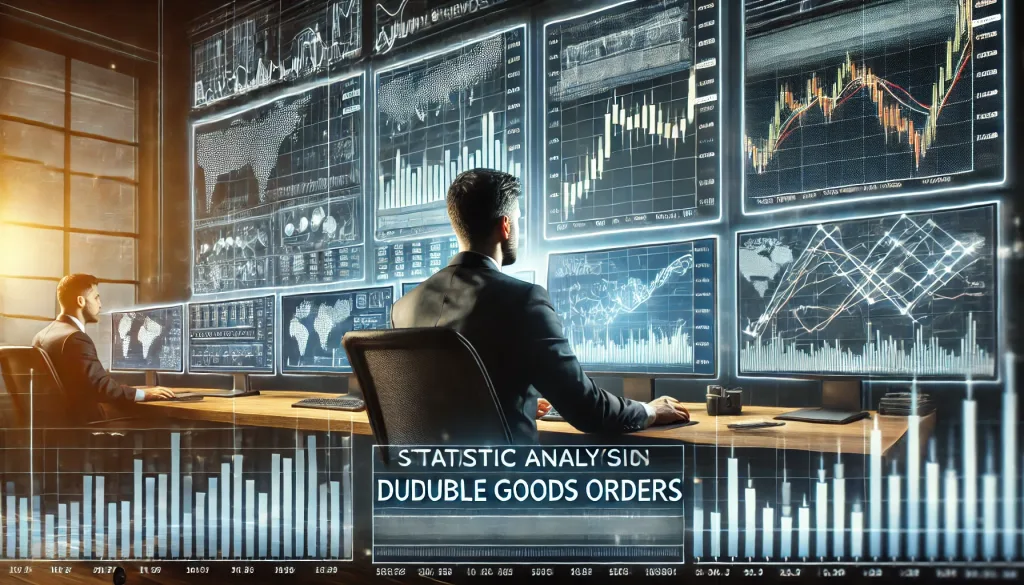The Hidden Profit Formula: How Durable Goods Orders Drive Statistical Arbitrage

Why Traders Miss the Money Flow (And How You Won’t)
Most traders stare at charts like they’re trying to decode the Matrix, oblivious to a key economic indicator that could give them an edge: durable goods orders. It’s not just some boring government report—it’s a goldmine for statistical arbitrage opportunities.
Here’s the problem: The market reacts to durable goods orders faster than a cat spotting a laser pointer, but most traders don’t know how to ride that wave. In this article, you’ll learn how to use durable goods data to fuel your statistical arbitrage strategy, revealing insider tricks to predict market moves like a seasoned hedge fund pro.
What Are Durable Goods Orders, and Why Should You Care?
Durable goods orders measure the total value of new purchase orders placed with manufacturers for hard goods—things like aircraft, machinery, and tech equipment. The U.S. Census Bureau releases this data monthly, and it’s a leading indicator of economic health.
Why does this matter to Forex traders?
- Stronger-than-expected orders → Signals economic expansion → USD bullish
- Weaker-than-expected orders → Signals slowdown → USD bearish
Secret Weapon: The real trick isn’t just reacting to the headline number—it’s analyzing the revisions. Hedge funds exploit order revisions for statistical arbitrage because the market often underreacts to adjustments.
Statistical Arbitrage: Turning Data into Profits
Statistical arbitrage (Stat Arb) is a market-neutral strategy used by quant traders to exploit short-term mispricings. This approach thrives on economic data releases, where short-lived price inefficiencies create prime trading opportunities.
How Durable Goods Orders Fit into Stat Arb:
- Pre-Release Expectations: Markets price in consensus forecasts before the data drop.
- Data Shock: If actual numbers deviate from expectations, short-term mispricings emerge.
- Reversion to Fair Value: The market adjusts over time, creating profit windows for traders.
Ninja Tactic: Pair trade USD-related assets using historical correlations. For instance, if durable goods orders spike and USD rallies, but gold (XAU/USD) hasn’t reacted yet, you might short gold expecting a delayed drop.
How to Use Durable Goods Orders for Tactical Entries
Step 1: Track Forecast vs. Actual Data Use an economic calendar (like StarseedFX’s Forex News Today) to monitor upcoming releases.
Step 2: Spot the Overreaction Markets often overreact to the initial release. If orders come in 10% above consensus, but the market already rallied 2% within minutes, chances are it will mean-revert soon.
Step 3: Trade the Mean Reversion Use a 5-minute or 15-minute chart to look for a reversal signal after the knee-jerk reaction.
Step 4: Revisions Are the Hidden Gem If the previous month’s orders are revised significantly higher, the USD impact may extend for hours or days.
Expert Insights on Durable Goods and Statistical Arbitrage
According to John Bollinger, creator of Bollinger Bands, “Traders who ignore economic data in quantitative models are leaving money on the table. Durable goods orders provide a real-time pulse on capital investments and business confidence.”
Ray Dalio, hedge fund billionaire, emphasizes: “Short-term inefficiencies in economic data releases create unique arbitrage windows—exploiting them is a core principle of systematic trading.”
Case Study: How Durable Goods Orders Moved the USD/JPY
In July 2023, durable goods orders surged 4.7%, shattering expectations of +1.8%. Within minutes, USD/JPY jumped 1.2%. However, traders who tracked revisions noted the prior month was adjusted downward. This meant the true economic impact wasn’t as bullish as the headline suggested—USD/JPY gave back half its gains within hours. Smart arbitrage traders profited both ways.
How to Automate This Strategy
If manually tracking economic data and setting up trades sounds exhausting, leverage AI-powered tools:
✅ Smart Trading Tool: Automate lot sizes & risk calculations (Try it here).
✅ Community Alerts: Get live trade insights from experts (Join the community).
✅ Trading Journal: Track your performance and refine strategies (Start here).
Final Takeaway: Trade Like a Pro, Not a Sheep
Most retail traders overlook durable goods data because they think it’s for economists, not traders. That’s why hedge funds keep winning. By integrating durable goods orders into your statistical arbitrage playbook, you’ll uncover trade setups that 99% of retail traders never see.
Action Plan:
- Start tracking durable goods orders before they release.
- Identify short-term overreactions and trade the reversion.
- Use historical correlations for high-probability setups.
- Automate where possible—don’t trade like it’s 1999.
Want an edge? Get live insights, free tools, and pro strategies at StarseedFX.
—————–
Image Credits: Cover image at the top is AI-generated
PLEASE NOTE: This is not trading advice. It is educational content. Markets are influenced by numerous factors, and their reactions can vary each time.

Anne Durrell & Mo
About the Author
Anne Durrell (aka Anne Abouzeid), a former teacher, has a unique talent for transforming complex Forex concepts into something easy, accessible, and even fun. With a blend of humor and in-depth market insight, Anne makes learning about Forex both enlightening and entertaining. She began her trading journey alongside her husband, Mohamed Abouzeid, and they have now been trading full-time for over 12 years.
Anne loves writing and sharing her expertise. For those new to trading, she provides a variety of free forex courses on StarseedFX. If you enjoy the content and want to support her work, consider joining The StarseedFX Community, where you will get daily market insights and trading alerts.
Share This Articles
Recent Articles
The GBP/NZD Magic Trick: How Genetic Algorithms Can Transform Your Forex Strategy
The British Pound-New Zealand Dollar: Genetic Algorithms and the Hidden Forces Shaping Currency Pairs
Chande Momentum Oscillator Hack for AUD/JPY
The Forgotten Momentum Trick That’s Quietly Dominating AUD/JPY Why Most Traders Miss the Signal
Bearish Market Hack HFT Firms Hope You’ll Never Learn
The One Bearish Market Hack High Frequency Traders Don't Want You to Know The

